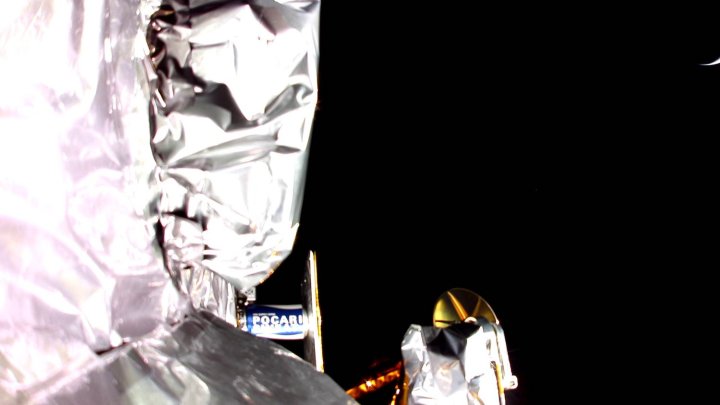
It was a highly anticipated mission that was set to enter the record books. But Astrobotic’s attempt at putting the first privately built lander on the moon in a controlled landing, and also at becoming the first U.S. mission to land on the moon since 1972, has ended in failure.
Still, despite the setback, the Pittsburgh-based team remains upbeat about Peregrine Mission 1, and is learning all the lessons it can in preparation for another lunar landing that it will attempt in November as part of the Griffin Lander mission.
The Peregrine lander launched from the Kennedy Space Center aboard a ULA rocket on January 8. But a few hours into its six-week journey to the lunar surface, Astrobotic reported that the spacecraft was experiencing a propellant leak. A short while later, it confirmed that Peregrine and its 20 payloads for government and commercial customers had no chance of reaching the moon.
In the early part of its journey, Peregrine beamed back a couple of images, which Astrobotic shared on its social media feed.
One of them showed what it described as a “curved sliver,’ which has now been confirmed to be Earth.
“Our flight dynamics team has confirmed that the curved sliver in this image taken on our first day of operations is, in fact, Earth!” the Astrobotic team wrote in a follow-up post on Wednesday. It included an image from its spacecraft simulator showing the camera’s view of Earth at the time the image was captured.
Update #11 for Peregrine Mission One: pic.twitter.com/QZjqUW00BZ
— Astrobotic (@astrobotic) January 10, 2024
Perhaps more curiously for some, the image also includes a can of the popular Japanese soft drink Pocari Sweat, which Singapore-based Astroscale used for its “Pocari Sweat Lunar Dream Time Capsule.” This was the first payload to be assigned to the Peregrine mission and contains messages from children around the world.
On Wednesday, Peregrine was located about 192,000 miles from Earth, Astrobotic said, adding that it remains “stable and and fully charged” and continues to gather “valuable data.”
The team said the spacecraft has about 36 hours of propellant remaining — an improvement on earlier estimates — suggesting it will shut down at around 7 a.m. on Friday morning.
Editors' Recommendations
- China confirms target date for landing taikonauts on the moon
- Peregrine spacecraft snaps stunning Earth photo just before burning up
- Astrobotic reveals how things will end for its troubled Peregrine spacecraft
- Astrobotic thinks it knows what caused propellant leak on Peregrine moon lander
- Check out the first image from Peregrine lunar lander


